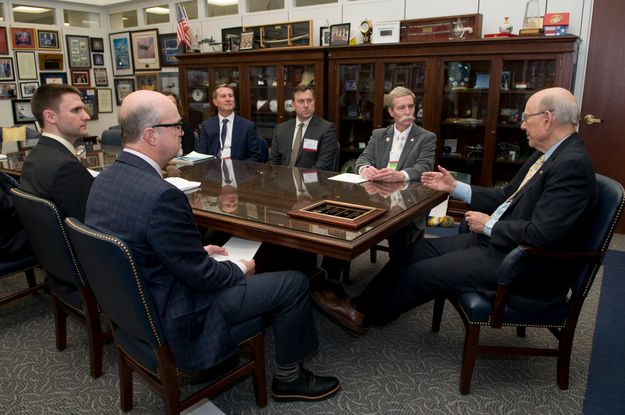Federal Vision Research: Funding Critical Ophthalmology Breakthroughs
Issue
Ophthalmology relies on federally supported research. While the private sector and universities can help promote some advances in our profession, it’s the federal government’s capacity for funding independent investigations that must be cultivated and shepherded through each year’s federal budget cycle.
The U.S. Department of Defense’s vision research program provides the only dedicated funding source for extramural vision research into deployment-related vision trauma. Since its inception, the program has provided researchers with $64 million to investigate penetrating eye injuries, corneal healing, retinal/corneal protection, traumatic brain injury-related visual dysfunction, the eye blast phenomenon and vision rehabilitation.
Meanwhile, the National Institutes of Health, with its National Eye Institute, is the federal government’s primary steward of vision-related research. But without adequate funding, the NEI may not be able to pursue its "Audacious Goal" of regenerating neurons and neural connections in the eye and visual system within the next 10-12 years, thereby restoring vision and returning individuals to productive, independent and quality lives.
Whether it's for a new device or breakthroughs in treating eye trauma, it’s up to the Academy to remind budgeters what’s at stake for ophthalmology’s patients.
"Federal vision research is crucial because it's the underpinning of so many advances we have in ophthalmology, whether it be OCT or whether it be a retinal prosthesis," said Michael X. Repka, MD, the Academy's medical director for government affairs. "The early-on research is often funded by federal research dollars."
Academy Action
The Academy takes steps each year to back up our convictions that the research undertaken by the NIH and Department of Defense is an unparalleled driver of innovation. We annually navigate Congress’ appropriations to ensure that there is enough money in the federal budget to continue this important work.
The Academy advocates strongly and convincingly on this issue alongside the National Alliance for Eye and Vision Research, of which we are a founding member. It was a key request for ophthalmologists participating in Congressional Advocacy Day 2018, an effort mirrored by the Blinded Veterans Association and NAEVR.

The Academy's Kansas delegation listens as Sen. Pat Roberts, R-Kan., explains his positions on a number of ophthalmology's issues
As the congressional FY 2019 appropriations process continues throughout the summer and fall, the Academy and our allies are requesting funding of at least $39.3 billion for the NIH, with at least $800 million for the NEI. These recommended funding levels will ensure a pattern of sustained and predictable increases. This money will also enable researchers to build upon past basic and clinical efforts to achieve the following:
- Accelerating the development of life-changing cures
- Training the next generation of scientists
- Driving the nation’s economy by creating jobs and economic growth
- Maintaining U.S. leadership in global innovations
Impact
The length to which the Academy has made this a key advocacy issue – along with our intimate understanding of the rhythms of the federal budgeting process – annually help ensure that our profession is well-spoken for during federal appropriations.
Recent increases gained through these efforts resulted in doubling the vision research program’s budget at the Department of Defense since 2016. If the U.S. Senate adopts funding levels already passed in the House of Representatives, the U.S. Department of Defense will have $20 million for its Vision Research Program for the upcoming fiscal year (or FY2019).